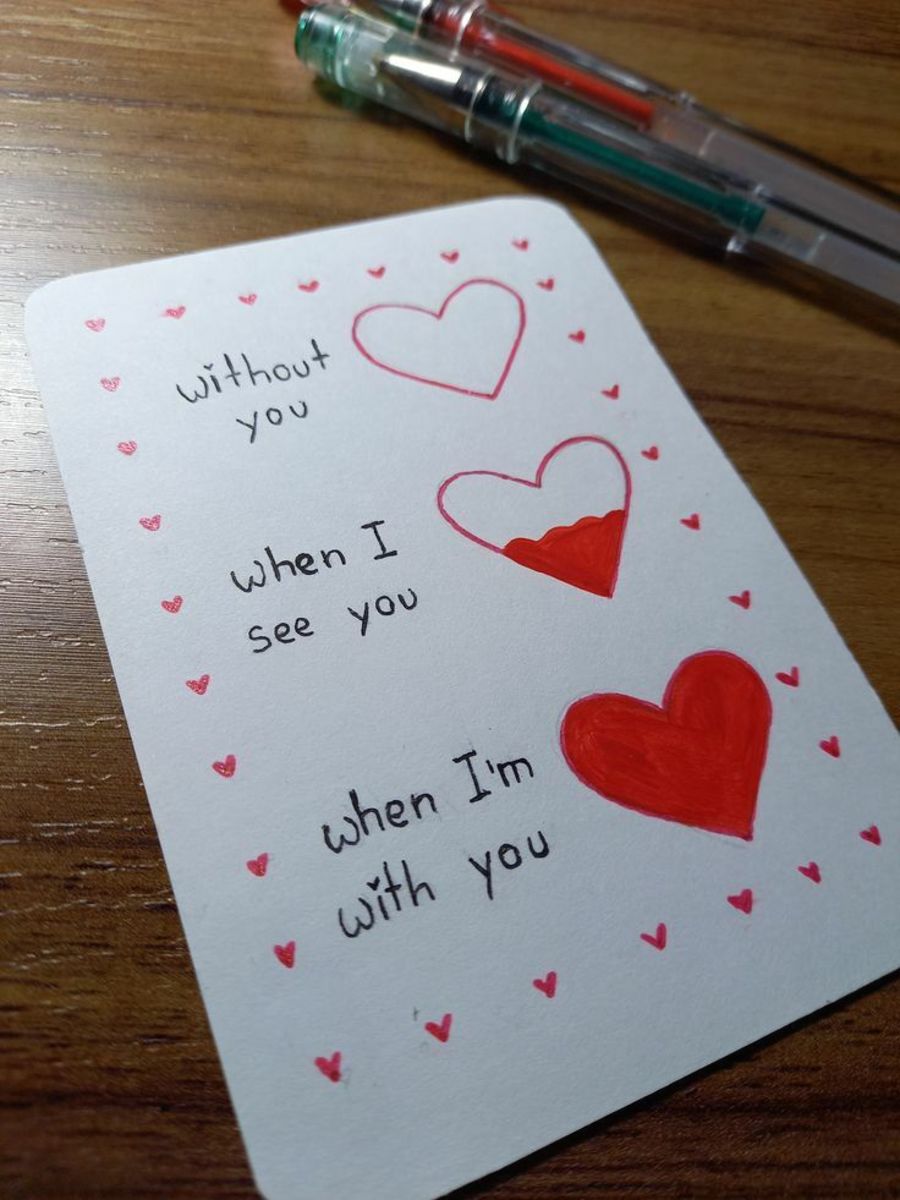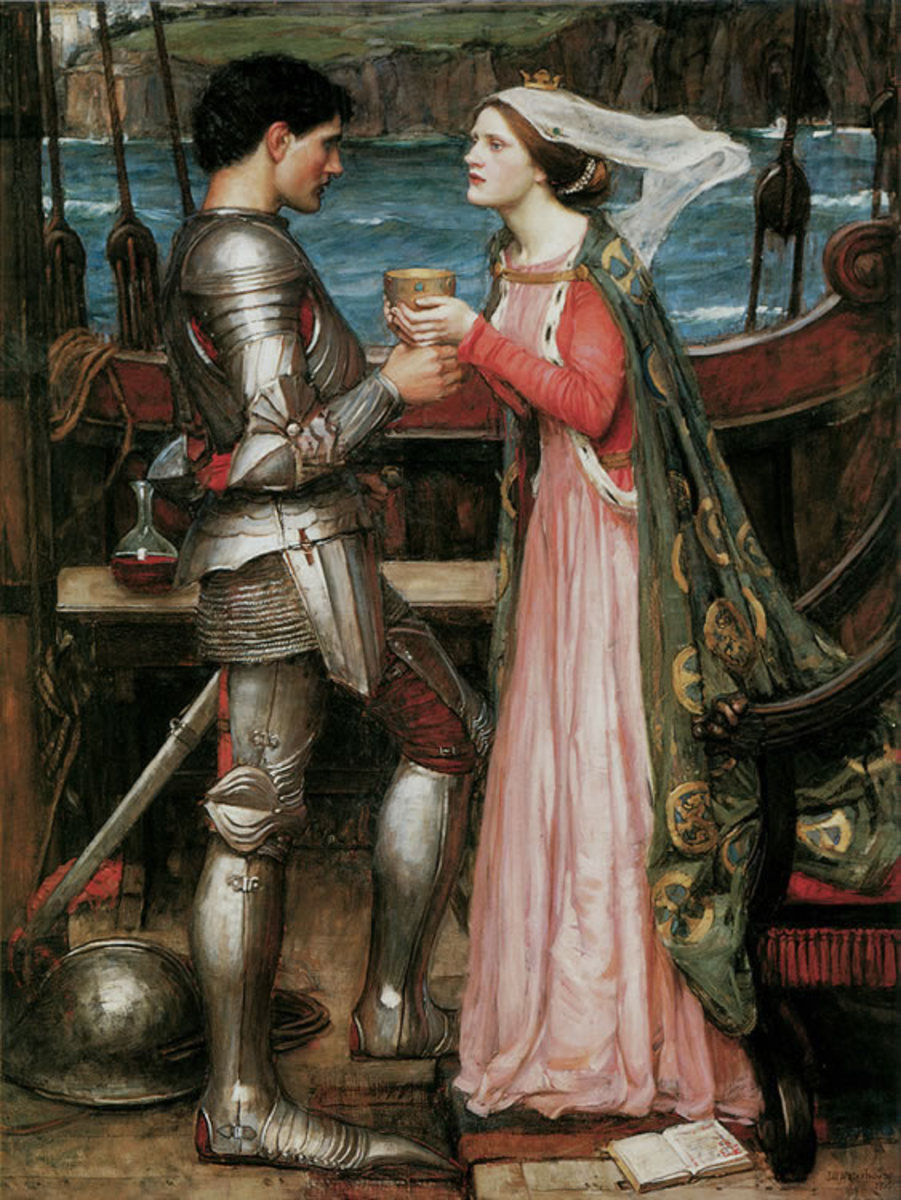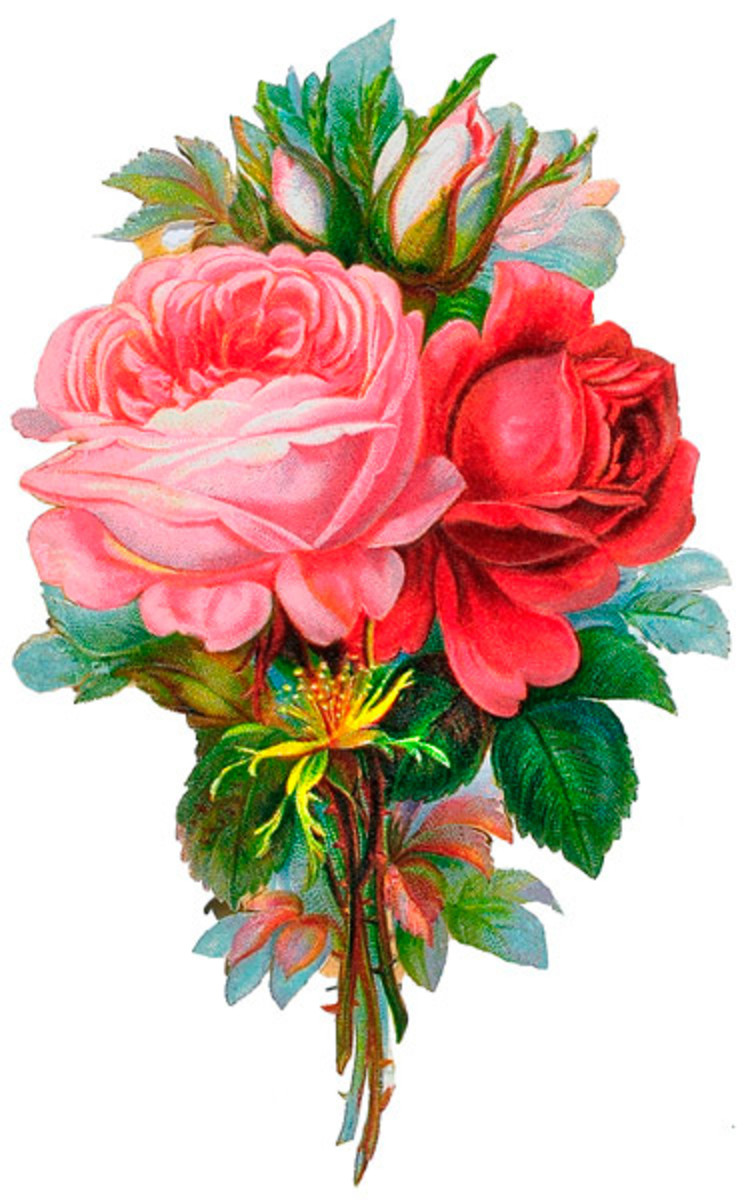St. Valentine's Day Origins and Customs
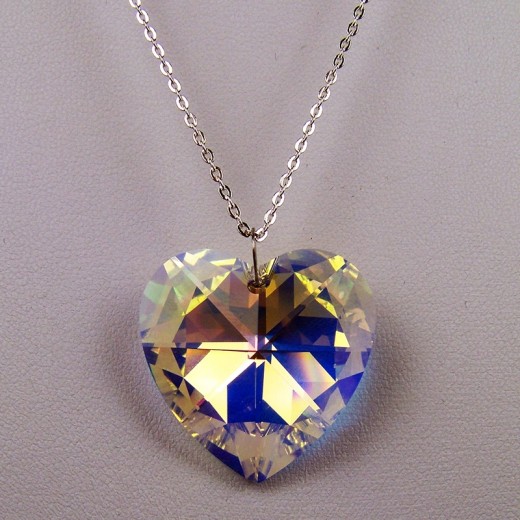
Origins of St. Valentine
Everyone knows that St. Valentine's Day is February 14th, but do you know how this holiday began? The origins go back much further than many people realize, and no, it was not a holiday invented by a greeting card company or girlfriends seeking jewelry and roses. Before Valentine's Day rolls around this year, get ready by brushing up on the origins and customs of the most romantic day of the year.
The exact origins of Saint Valentine himself are a bit murky. There were three in the history of Christianity, although there is one leading candidate for being the actual St. Valentine after whom the holiday for lovers was named. There was a clergyman named Valentine in Rome during the reign of Claudius II. The Emperor had decided that single men made more willing soldiers, and so in order to build his army, he made it illegal for young men to marry. Love has a way of happening even when there are rules to the contrary, of course, and the Roman men who wanted to wed were able to turn to Valentine. The clergyman was known for performing secret marriages against the wishes of Claudius II, which eventually landed him in jail.
The legend of St. Valentine goes on to say that while he was imprisoned, Claudius II attempted to convert him to paganism and Valentine tried to convince the Emperor to become a Christian. The two sides never did see eye to eye, and in the end, Valentine was executed. In the year 496 AD, Pope Gelasius decreed February 14th to be the feast day of the martyred St. Valentine. The Christian holiday was a time for those in love to express their devotion to one another, and St. Valentine became the patron saint of lovers.
Lupercalia - Pagan Winter Love Festival
This is not the end of the history of St. Valentine and the Roman Catholic Church. In 1969, the Church decided to remove a number of feast days dedicated to various saints from the official calendar. In many cases, they lost their feast days, but not their sainthood. In an effort to reduce the number of martyrs on the annual calendar of worship about whom little was truly known, the Vatican took away the feast days of these unlucky martyrs. One of the most famous of these displaced martyrs was St. Christopher, and another was St. Valentine. As there was no proven link between the executed clergyman and the romantic love with which he had become associated, it was decided that February 14th would no longer be recognized by the Roman Catholic Church as St. Valentine's Day.
There are still more intriguing theories surrounding the Catholic Church and St. Valentine's Day. The martyred clergyman is a leading theory as to the origin of the holiday, but it is certainly not the only possibility. Mid-February has been a time of year in which fertility festivals were celebrated dating back to at least Ancient Greece. In Athens, the time period which we now know as mid-January to mid-February was the month of Gamelion, which was dedicated to the sacred marriage of the gods Zeus and Hera.
Another mid-February fertility festival was the Roman celebration Lupercalia which began on February 15th each year. The festival highlights included ritual animal sacrifices and the pairing of men and women by pulling names out of an urn (a predecessor to the “key parties” of the 1970s, no doubt). The early Christians were none too pleased with the hedonistic spirit of Lupercalia, and the theory goes that the reason that their own romantic holiday was scheduled for February 14th was to upstage the Roman festival or perhaps to co-opt it and make it into something more Christian. It may not be a coincidence that the year in which Pope Gelasius made February 14th St. Valentine's Day was the same year in which he banned the celebration of Lupercalia.
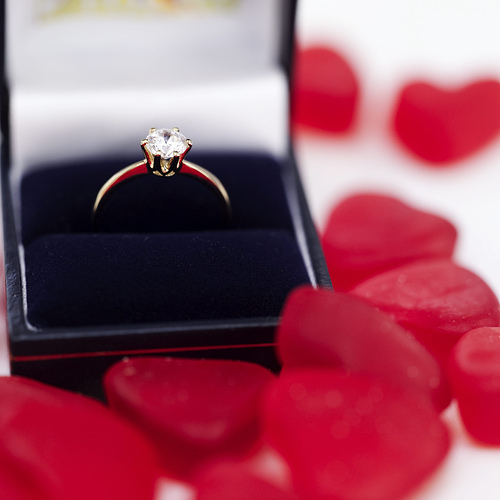
Valentine's Day Becomes Popular Holiday
Whatever the true origins of St. Valentine's Day, it is now a very widely celebrated holiday, particularly in the United States, Canada, Mexico, the United Kingdom, France, Belgium, and Australia. It is definitely considered to be the single most romantic day of the year, and is the second most popular day for proposals (after Christmas) and the most popular day for weddings. Each year, approximately one billion Valentine's cards are exchanged, which again places the holiday after only Christmas for the most greeting cards sent.
The concept of Valentine's Day as a time to revel in the joy of romantic love began to gain traction in the 14th Century. It was the era of Chaucer, and the ideal of courtly love was in full bloom. So prevalent was the theme of love in society that on February 14, 1400, a High Court of Love was established in Paris. The Love Court was created to hear cases about love contracts, betrayals, and violence against women. The first documented Valentine's greeting was sent in 1415. It was written by Charles, the Duke of Orleans who had been captured by the British and imprisoned in the Tower of London. The letter which the Duke sent home to his Valentine, the Duchess, is now a part of the collection of the British Library in London.
St. Valentine's Day appeared in print many times from then on, including this passage from William Shakespeare's Hamlet (circa 1600), which was spoken by the character Ophelia:
To-morrow is Saint Valentine's day,
All in the morning betime,
And I a maid at your window,
To be your Valentine.
Then up he rose, and donn'd his clothes,
And dupp'd the chamber-door;
Let in the maid, that out a maid
Never departed more.
—William Shakespeare , Hamlet, Act IV, Scene 5


Candy, Jewelry, and Red Roses
Over the centuries, many of the symbols which are very familiar signs of Valentine's Day became a part of the holiday's traditions. No symbol is more closely associated with lovers than the heart. As far back as the 12th Century, people realized that when they were excited, their heart would beat faster (“be still, my pounding heart!”). They did not know the physiological reasons behind an accelerated heart rate, but the heart was labeled as the center for emotions. Therefore, the heart shape came to represent love and giving your heart to another. A variation on this is a heart pierced with an arrow, which stands not only for love, but for the vulnerability of love and of giving oneself completely to their true love.
The heart shape is used in every type of Valentine's celebration. The ubiquitous red heart shaped boxes filled with chocolates first hit the scene in 1861, courtesy of chocolatier Richard Cadbury. If you are a fan of conversation hearts, those little heart shaped candies stamped with romantic sayings, you can thank NECCO, or the New England Confectionary Company, for popularizing them. The predecessor to NECCO came up with their first imprinted confections back in 1866, and in 1900 they invented “Sweet hearts”. Fun fact: the first Sweet hearts were not actually heart shaped, but were cut into horseshoe and baseball forms. They were fairly large, which allowed long sentiments to be printed on them. An early motto candy inscription read: “How long shall I have to wait? Pray be considerate.”. Over time, the heart shape was adopted and the mottos were shortened to phrases like “Be mine” or the modern version “Email me”.
Jewelry is another place where the heart as a symbol of love and romance is especially popular. There are heart shaped necklaces like the precisely faceted crystal pendants from the Swarovski company of Austria and silver heart shaped charms from American jewelers like Tiffany and Co. The popularity of jewelry as a gift for Valentine's Day probably accounts for why men typically spend almost double on the holiday as women, although women do buy the majority of Valentine's greeting cards.
Flowers, and particularly roses, are another traditional Valentine's Day gift. The red rose symbolizes passion and romantic love, making it a natural expression of love on the holiday for lovers. Cleopatra supposedly scattered rose petals at the feet of her lover Mark Anthony. Roman legend has it that there was once a beautiful maiden named Rodanthe who was the object of desire for many men. After she spurned them all, a lustful mass of admirers broke down her door, which angered the goddess Diana. To teach all involved a lesson, Diana turned the lovely Rodanthe into a rose and her suitors into thorns. The rose is also the flower of Eros and Cupid, of Greek and Roman mythology, respectively.
How popular are roses? It is estimated that the annual value of cut roses produced in the U.S. is over $24 million wholesale. By the way, choosing the most traditional symbol of passion at Valentine's Day will cost you; the prices for roses spike as much as 40% around February 14th each year. For those undeterred, a quick lesson in the meaning of flowers is in order: red roses symbolize passion and romantic love, pink stands for admiration and femininity, white for purity, lilac for love at first sight, orange for desire, and yellow roses are for friendship.
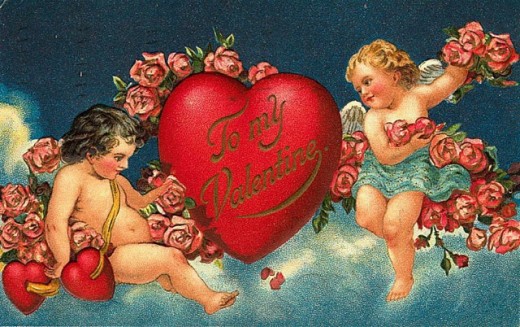
Victorian Valentine's Day Cards
The most commonly offered Valentine's Day gift is a greeting card. Early Valentine messages were either written out or whispered in the ear of a lover, but by the 1800s in England, sending a greeting card was the preferred method of expression, and it remains so today. By the turn of the 19th Century, the popularity of mailing cards for St. Valentine's Day encouraged entrepreneurs to begin manufacturing them in factories. The early Valentines were lavish cards decorated with ribbon and real lace, as well as sentimental messages. The real surge in sending Valentine's cards, though, was inspired by a decidedly unromantic organization; when the British postal service established uniform postage rates across the United Kingdom in 1840, mailing greeting cards suddenly became much more feasible.
No one loved love more than the Victorians, and the practice of exchanging Valentine's cards exploded. The Victorians were mad for stand ins which allowed them to speak words too racy for their restrained society, and the beautiful cards were the perfect vehicle for lovestruck men and women of the era. Vintage Victorian Valentines are prized today for their intricate and exquisite designs featuring hearts, lace, flowers, and Cupids. Speaking of Cupid, the winged cherub-like figure with the bow and arrows is said to help people fall in love by shooting them with one of his arrows. He was born to the job; Cupid was the son of Venus, the Roman goddess of love.
The tradition of sending Valentine's Day cards was promoted in the United States by a woman named Esther Howland. The daughter of a stationer, in the 1840s Howland designed the first commercial St. Valentine's Day greeting cards, which were offered in her father's Worcester, Massachusetts stationery and book store. Esther Howland was inspired by an English Valentine card which she had received, and before long, Americans were just as enthralled with Valentine's cards as their counterparts across the pond. The tradition of giving romantic or friendly messages on February 14th has become firmly entrenched across all age groups and relationships, from grade schoolers (remember how Charlie Brown was always disappointed not to receive any cards?) to lovers to parents and children.
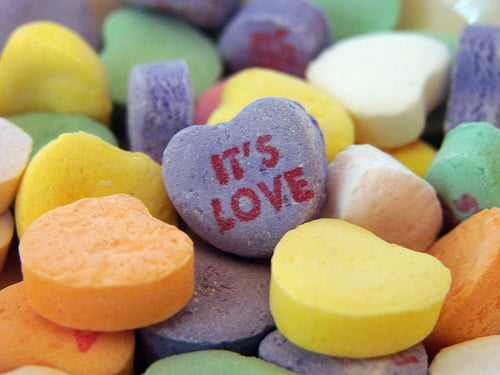
Valentine's Day Still Popular, Despite Some Backlash
These days, Valentine's Day is as popular as ever...among most. There has also been a backlash against the holiday among those who feel that the day for lovers is almost like a day against singles. Groups of single friends having parties or going out to dinner on February 14th have become an ever increasing presence among all of the couples sharing romantic dinners. Even the greeting card industry has had to acknowledge the anti-Valentine's Day crowd by issuing snarky cards for the occasion. Traditional manufacturers of romantic Valentine's greetings like American Greetings and Hallmark have expanded their lines to include a small selection of cynical Valentine's Day cards. The anti-Valentine's Day merchandise selection is even larger online, where tens of thousands of items are available, such as cards which read: “Valentine, we’re both looking for the same thing...Someone else.”
Despite the small backlash, Valentine's Day remains a wildly popular holiday among those in love, looking for love, or just in love with love. Relatively unchanged since the modern form took hold in the 1800s, February 14th is a day to celebrate love in all its forms, including romantic and platonic. And if the brisk sales of heart shaped candies, greeting cards, jewelry, and red roses are any indication, St. Valentine's Day is here to stay.
- US Census Press Releases
Fun Facts and Statistics About St. Valentine's Day

